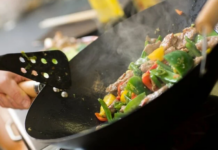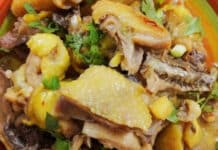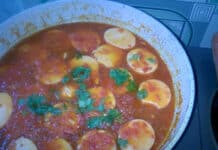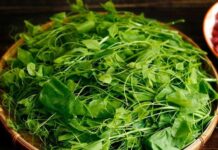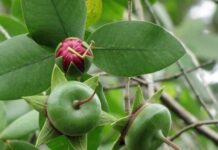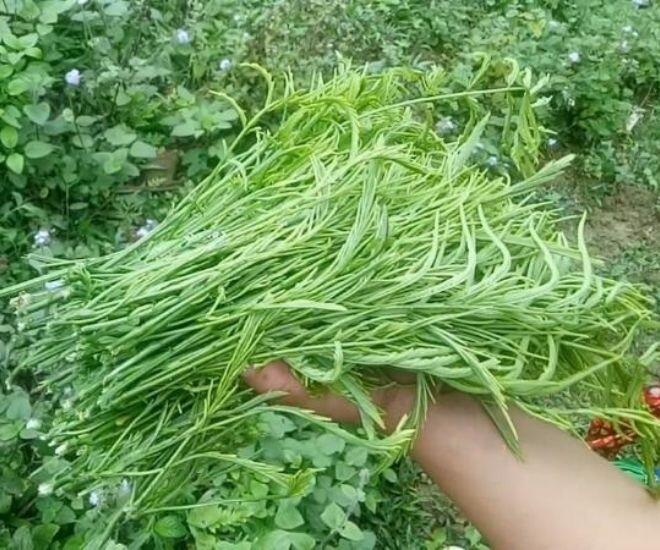
In the Thai ethnic language, “rau thối” is known as pắc nam. This wild vine grows rampant in the forests, its long, thorny stems adorned with deep green, symmetrical leaves. The tender young shoots are the most prized, used both in cooking and traditional medicine. Harvesting requires care to avoid scratches from its sharp thorns.
Rau thối thrives from March to June, when the Northwest forests are lush and humid. It’s most abundant in Son La, Dien Bien, Lai Chau, and Yen Bai provinces. During this season, fresh rau thối appears in highland markets, often sold by locals. It’s not just a regional delicacy; it’s transported to Hanoi and other cities, gracing menus of Northwest specialty restaurants. In Hanoi, prices can soar to hundreds of thousands of dong per kilogram, while locals sell it for a fraction of that.
The Aroma of the Mountain Forest
Its name, “rau thối” (stinky vegetable), comes from its strong, distinctive scent, which can be off-putting to first-timers. Yet, many argue the smell is merely unusual, not truly foul. Interestingly, the aroma softens after harvesting. Locals prefer it fresh to savor its boldest flavor.
When cooked, rau thối transforms into a fragrant, crisp delight. This contrast between raw and cooked makes it truly unique. Many visitors, initially hesitant, become fans after tasting it, even buying it as a souvenir.
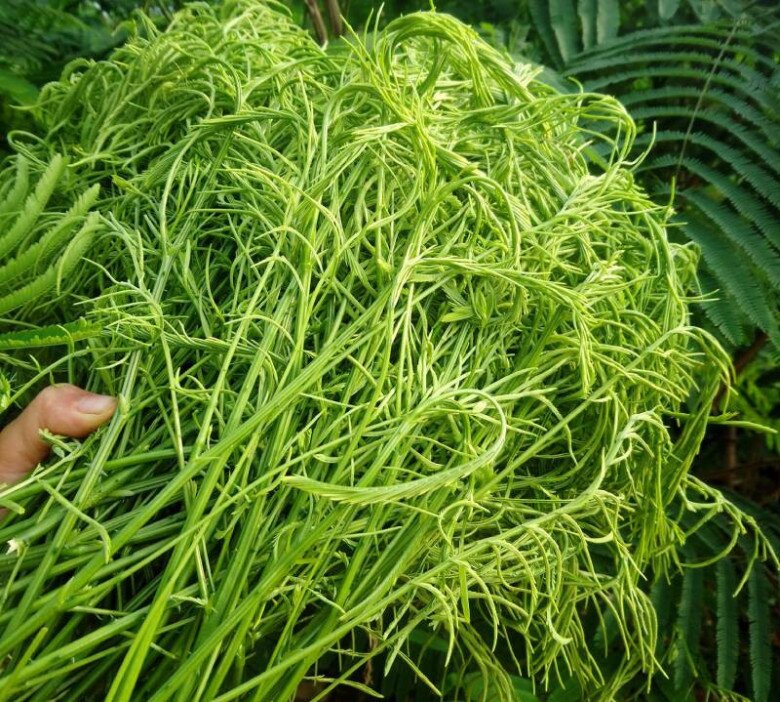
Beyond its culinary appeal, rau thối is a prized herbal remedy. Locals use it to cool the body in summer and treat joint pain. Dried rau thối is used in traditional medicine for liver, kidney, and stomach ailments, as well as acid reflux and mouth bitterness. Its health benefits make it a sought-after specialty, valued for both flavor and wellness.
Delicious Dishes Featuring Rau Thối
Northwest cuisine shines with its creative blend of forest ingredients and ethnic culinary secrets. Rau thối is no exception, starring in a variety of dishes.
Rau Thối Salad with Wild Eggplant and Dried Pork: A signature dish in highland restaurants. Blanched rau thối is tossed with wild eggplant and shredded dried pork, seasoned with fish sauce, lime, chili, and peanuts. The tangy, savory, and refreshing flavors make it irresistible.
Pork Tail Soup with Rau Thối: A nourishing family favorite. Tender pork tail is simmered with rau thối, creating a sweet broth that complements the vegetable’s unique taste.
Rau Thối Stir-Fried with Bamboo Shoots: A simple yet authentic dish. Crisp bamboo shoots and rau thối create a light, refreshing flavor, perfect for summer meals.
Grilled Stuffed Fish with Rau Thối: A festival specialty. Freshwater fish like carp or trout are stuffed with rau thối and spices, then grilled over charcoal. The aroma of fish and rau thối creates an unforgettable experience.
Rau Thối Patties: A modern twist. Minced rau thối and pork are seasoned, shaped into patties, and fried until crispy. Served with rich fish sauce, it’s a hit among young foodies exploring Northwest cuisine.
Rau Thối Egg Drop Soup: Similar to tomato egg soup but with rau thối, offering a bolder flavor for those accustomed to its taste.
Rau thối can also be simply boiled and dipped in fish sauce, stir-fried with beef or pork. Each preparation highlights its unique flavor, making it a culinary emblem of the region.

For travelers, rau thối is a unique regional souvenir. Though less common than tea or plums, its distinctiveness makes it special. Many buy fresh or dried rau thối as gifts, despite its high city prices. Its flavor and health benefits make it a worthy choice.
Today, rau thối has moved beyond home kitchens to city restaurants, featuring on tourist menus. It’s one of the Northwest’s most unique specialties. From its name to its flavor, it sparks curiosity and offers a distinct culinary experience.
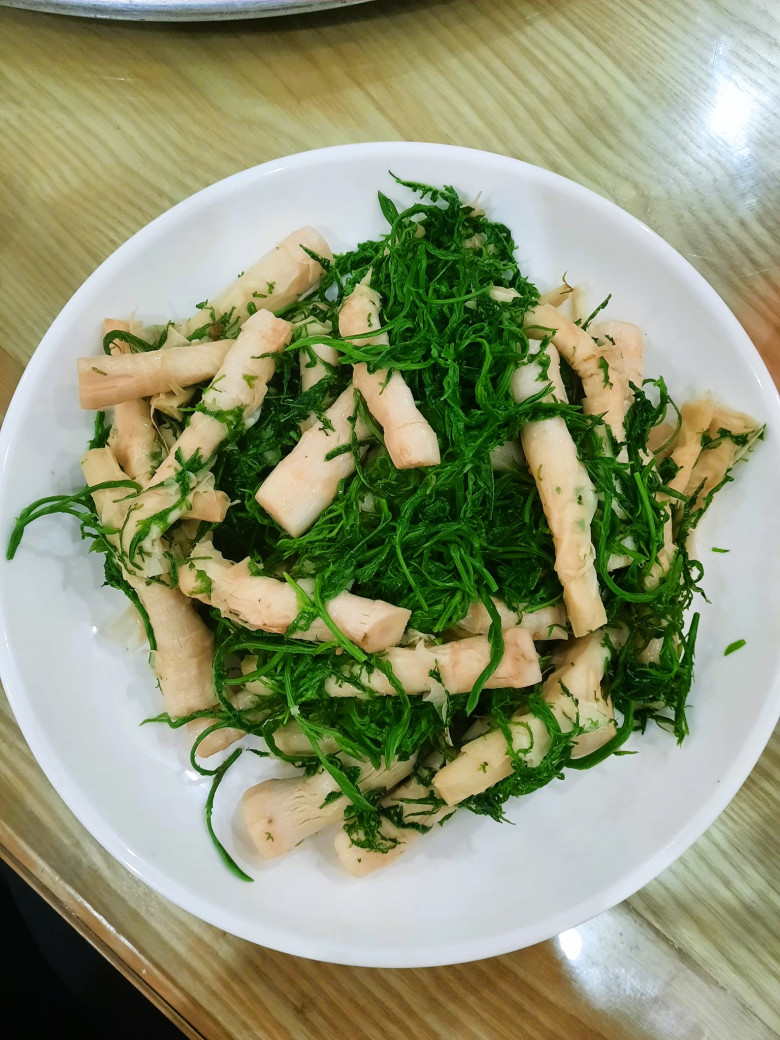
Beyond its initial aroma, rau thối reveals a crisp, sweet flavor when cooked, showcasing the sophistication of local cuisine. With its culinary and medicinal value, rau thối is a proud symbol of the Northwest, a unique gift for those exploring Vietnam’s regional specialties.







